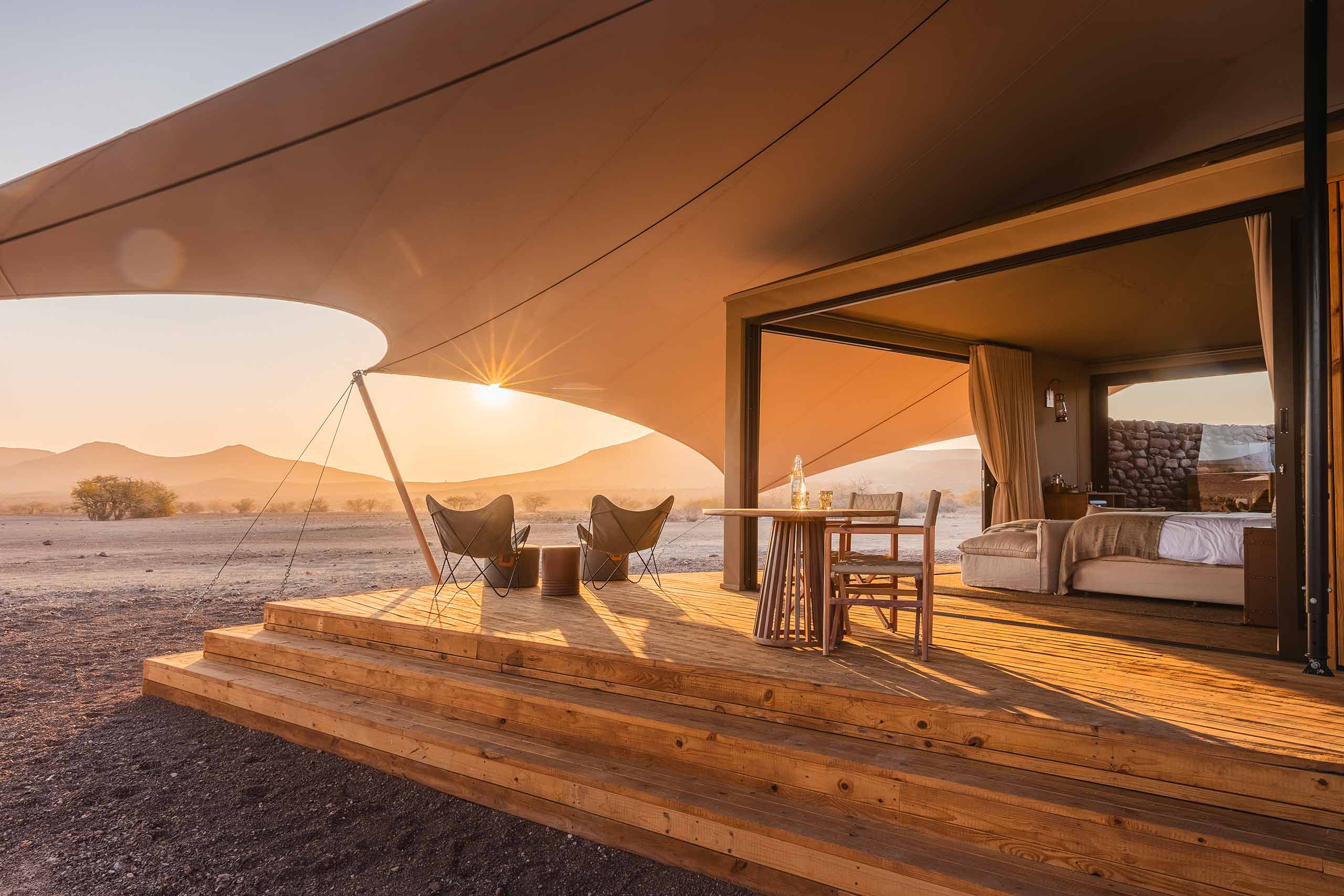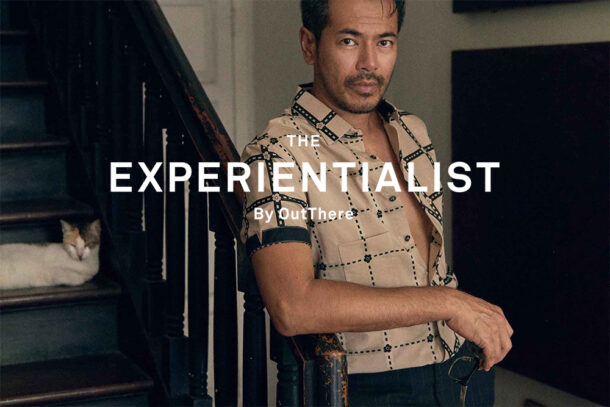Set among mesmeric desert landscapes beneath impossibly starry skies, the beautifully designed Desert Rhino Camp is both one of the world’s best bases for tracking highly endangered black rhinos and a deliciously luxurious deep-wilderness retreat.
We gaped, gawped, gazed in wonder. There, some distance ahead of us, was a black rhino with her calf. She had been dehorned for her own protection, but was no less magnificent for that. Dehorning is a not uncontroversial practice, but it seems the animal losing most on its account is the one that has, for now, made it necessary – the human, whose hunger for its horns as bogus medicinal ingredients and hunting trophies has so catastrophically damaged these beautiful beasts.
Black rhinos remain critically endangered, though populations have grown since the 1990s when numbers had plummeted by 96% to just 2,300, bringing the species perilously close to extinction. Now they’re back up to 6,500, with the largest free-roaming population in the world residing in the vast, arid wilderness of northwest Namibia.
For that reason, one of the best bases on Earth for black rhino spotting is Desert Rhino Camp. Now run by conservation tourism operator Wilderness, in partnership with Save the Rhino Trust and three local community conservancies, the newly renovated camp, in Damaraland’s Palmwag Concession, is a gateway to the wild world of the animals it protects – not to mention a luxurious and deeply stylish desert retreat.
“Our main focus was, is and will remain the protection of our black rhino population”, said Alex Henderson, managing director of Wilderness Namibia, during our visit. “It’s why we do what we do, and why, with our partners, we welcome guests to our camp. We want them to see our work at first hand”.
Guests certainly do that. The camp operates daily drives into the desert and tracking by jeep and on foot, supplemented by highly informative chats with rangers and panels that include a Rhino Hall of Fame. And apart from these daily main events, there is a sublime peace in simply sitting in the camp and gazing at the setting, and changing Damaraland skies. Each view seems to offer as infinite a serenity as the last.
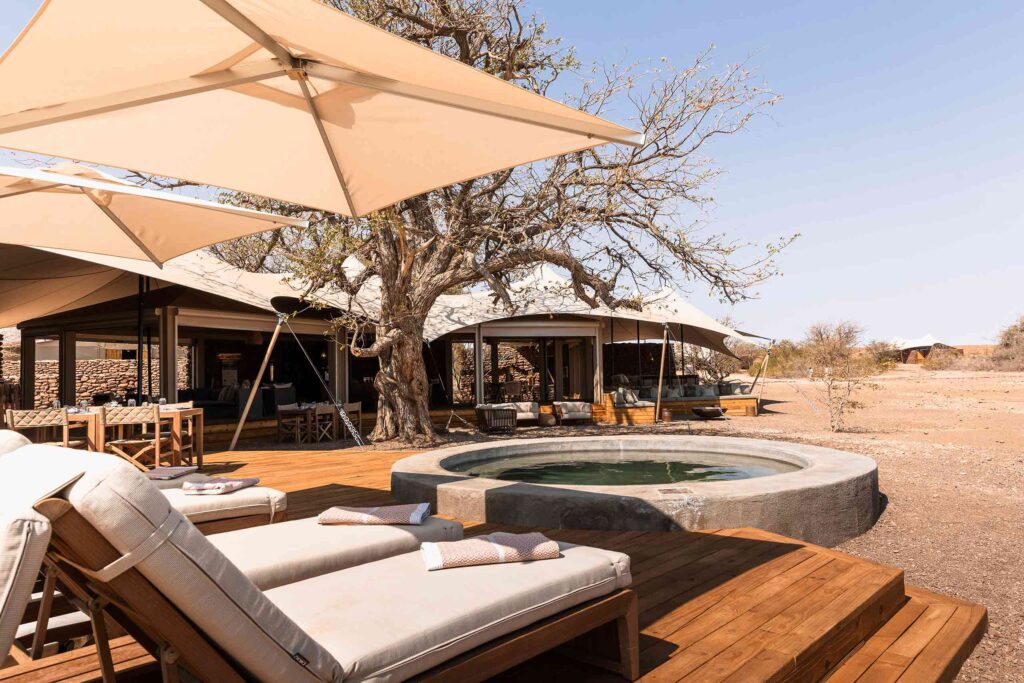
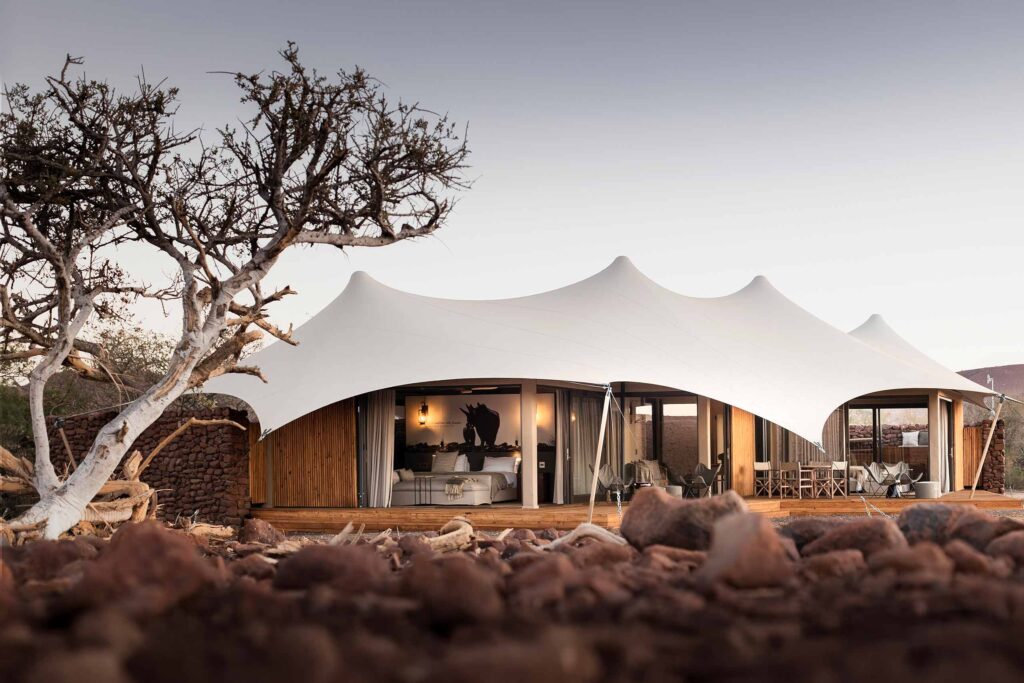
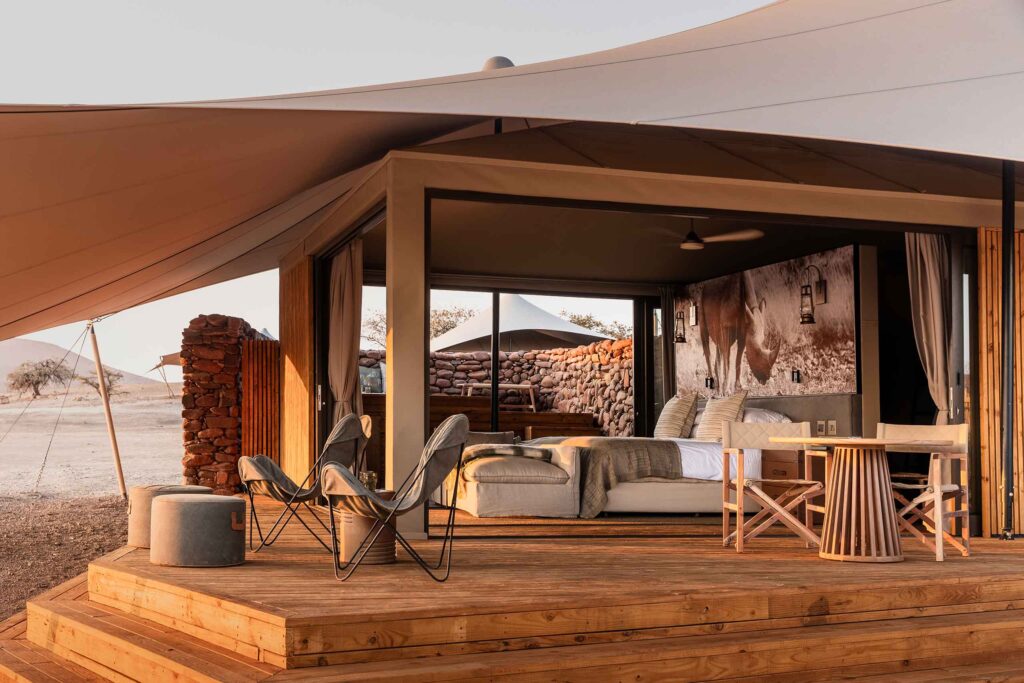
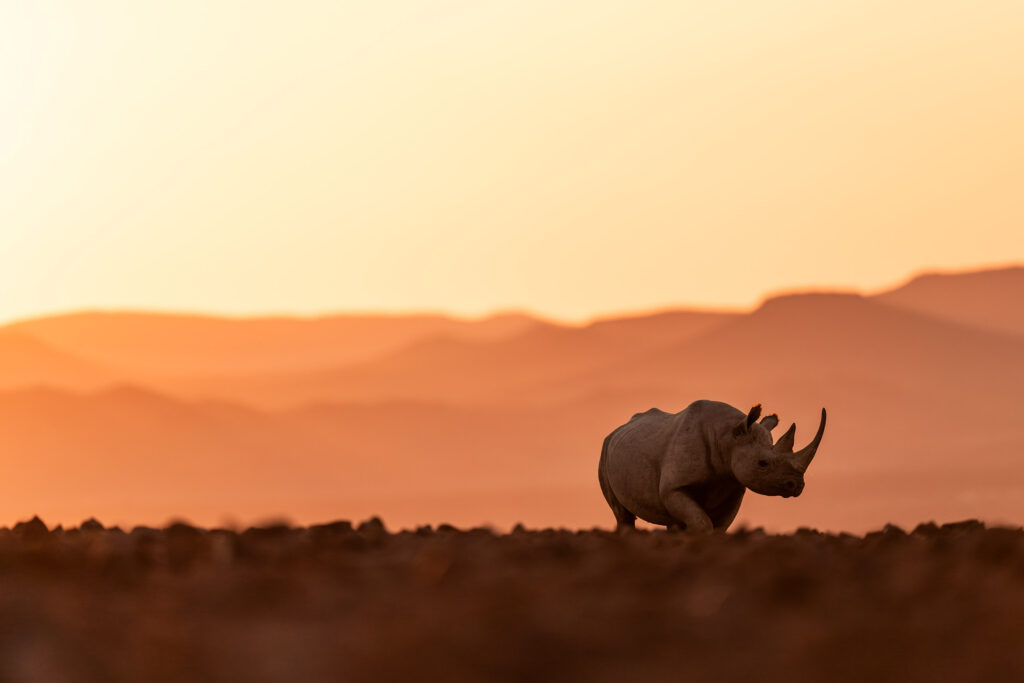
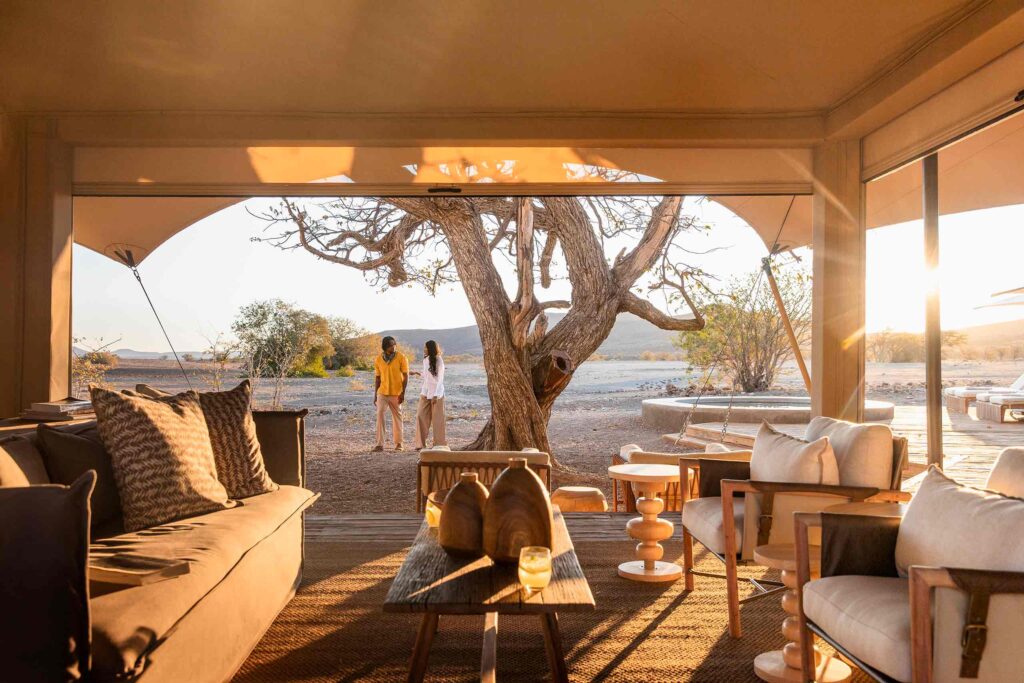
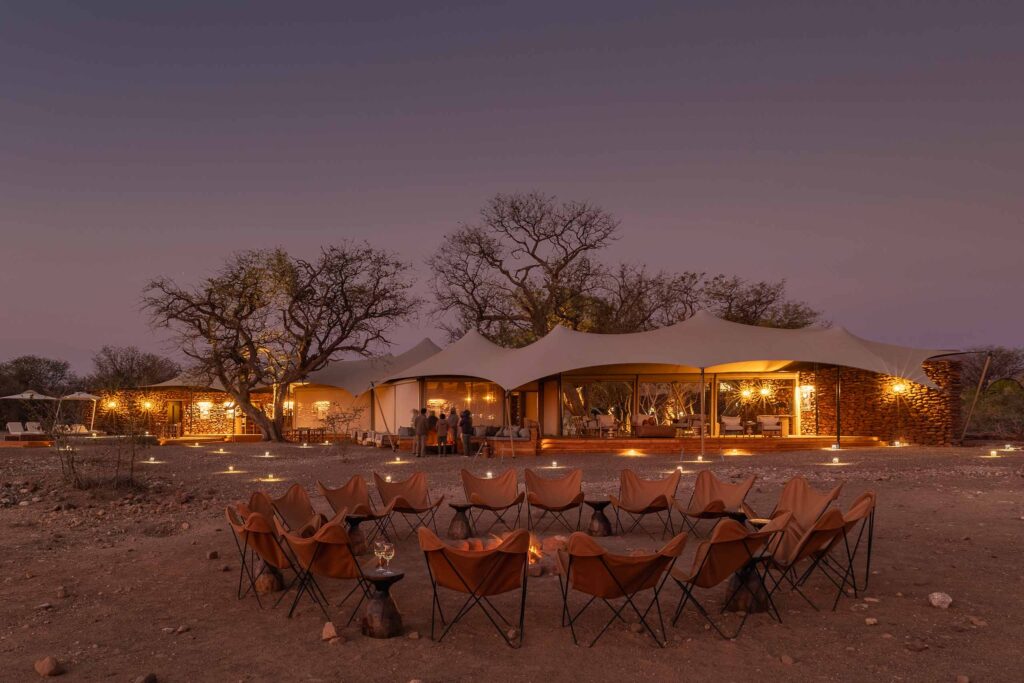
| Perfect for | Fly into | Right on time |
| The Adventurer | WDH, then connect to FYDN by light aircraft | GMT +2 |
| While you’re Out There |
| Before Desert Rhino Camp became a luxury lodge, it was a field station dedicated to protecting black rhinos, the most endangered of species. That purpose remains at its core, and everyone who visits can accompany rangers from the camp and from Save the Rhino Trust on drives and out on foot to search for these magnificent animals. The thrill of seeing one is beyond compare. |
Interior designer Cate Simpson, who has also worked with Wilderness on some of its other lodges, wanted the solar-powered camp to be in perfect harmony with its rugged surroundings – a ‘reflection of the natural environment’. We found she had fulfilled her vision beautifully. Six canvas, wood and stone suites stretch out from the central, shared hub where the restaurant, bar and plunge pool are located. Each suite is spacious with a generous wraparound deck for staring into desert space, two showers – one indoor, one out – a vast, comfortable bed, plus another, outdoors, for supine sky-gazing. Add to this a bar filled with all manner of delectable options to eat and drink, and it’s easy to understand why fantasies of relocating here to become a ranger soon become enthusiastic discussion points with strangers over dinner.
Simpson has deftly tapped into the desert’s palette and patterns for her redesign. Deep terracottas capture the reds of the mountains’ basalt rocks. Sage greens evoke the shrubs and vegetation that rise from the soil near any water source or water. Burnished copper hues carry the shades of Africa’s sands and sunburned skies, and the soft architectural lines bring to mind the landscape’s undulating contours. Further beauty is to be found in the fine detail. Fabric roof coverings provide excellent shade while allowing spectacular views in, embroidered scatter cushions show the windswept grasses that grow throughout Palmwag, and specially commissioned ceramics add texture.
The cuisine, too, is infused with local heritage. Chef Namwandi’s rainbow plates ensure optimum nutrition, whether he is cooking in his kitchen, preparing lunch over a portable stove beneath a mopane tree, or creating snacks for the desert sundowners guests are served on every drive.
Among the highlight dishes we savoured were layered dhal with sweet and sour aubergine, jacket sweet potato with crispy tofu and ginger, and roasted cabbage with millet taboulleh and almond ricotta. All superb. Meat eaters were also extremely well catered for. Tender pork belly, beef fillet, and a chicken and liver pie were greatly appreciated, judging by how quickly our fellow guests’ meals disappeared.
Desert Rhino Camp is gorgeous, of course, but the interiors are merely a backdrop to the great nature that hosts them. The outdoor star-gazing bed is a delightful place to rest, by day or night. By day, our pleasure came from stripping off and feeling the sun’s warmth on naked skin. By night, we watched bodies far more heavenly than ours illuminate the sky. Its intoxicating remoteness does, however, have drawbacks for some, making the camp, and the strenuous journey to reach it, unsuitable for those with impaired mobility and children under six years.
www.wildernessdestinations.com
Photography courtesy of Wilderness


